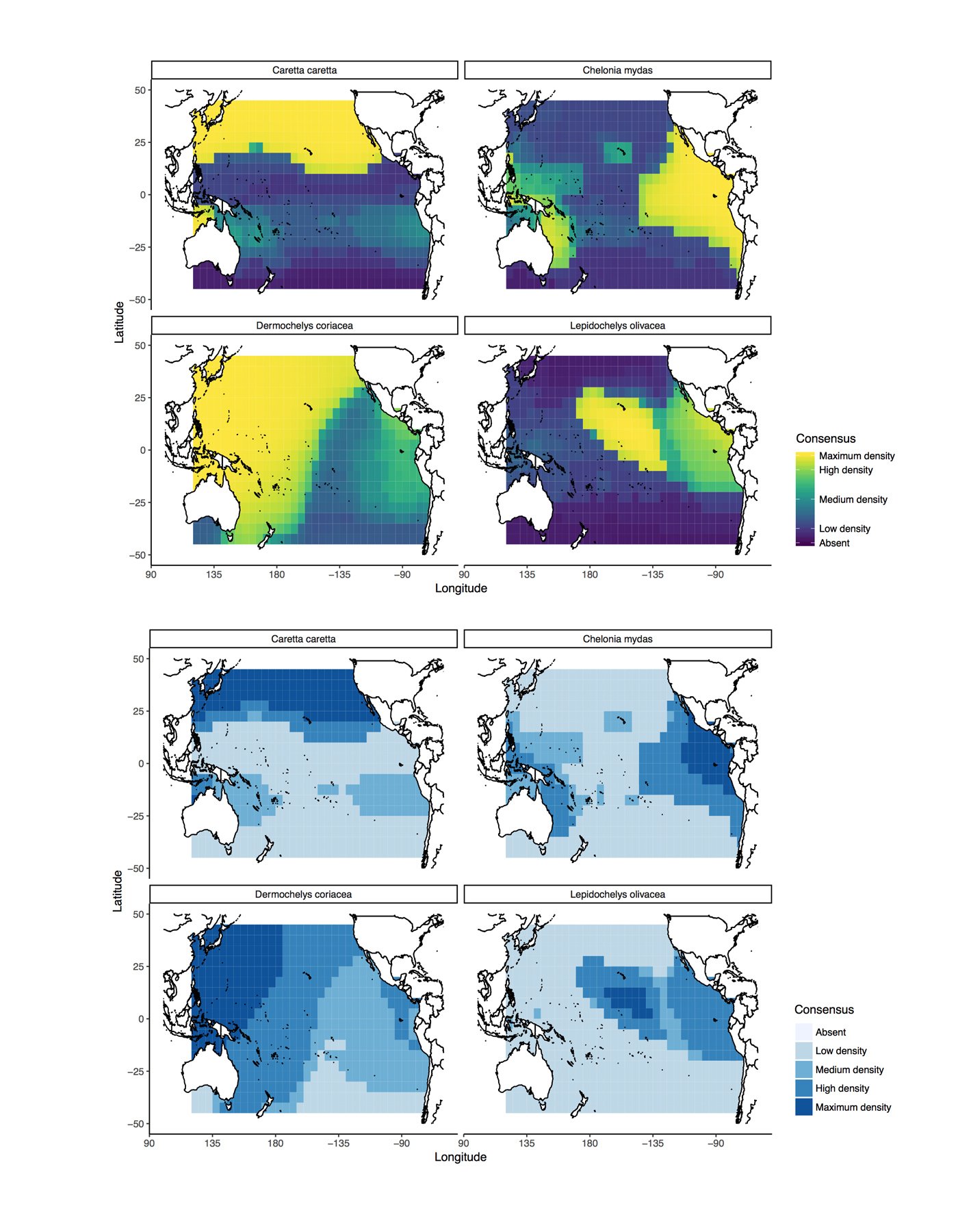We created an online survey to map the distribution of four species of sea turtle in the Pacific Ocean. The maps fed into simulations of turtle interactions with fisheries that were produced at an international workshop.
Where are the turtles?
Turtles are accidentally caught in the Pacific’s tuna and billfish (swordfish and marlin) fisheries. Understanding how they interact with fisheries is essential for designing methods to reduce this bycatch. Having accurate maps of turtle distribution enabled the workshop to weight the impact of the fisheries appropriately.
Delphi survey
We developed an online survey method to allow experts contribute their knowledge independently. The experts coloured maps of the Pacific Ocean, according to their perceptions of turtle abundance. A statistical model was then used to combine the maps, producing estimates of relative abudance and the associated uncertainty.
We followed the Delphi method, presenting the experts with a summary of results after an initial round, and allowing them to update their responses.
New maps
The need to update the existing maps of turtle distribution was raised as an issue at a previous WCPFC-led turtle workshop. The workshop had concerns that existing maps didn’t reflect the full range of expert opinion, and had also asked for them to be peer-reviewed.
Our Delphi survey was proposed as a solution and we worked closely with the Pacific Community (SPC) to create a bespoke tool to meet their requirements.
Delivery
The mapping work was supplied under contract to SPC, which provides science support for the WCPFC. Dr Philip Neubauer travelled to Hawaii to attend the workshop and present an explanation of the mathematics underlying the new maps.

The turtle workshop was supported by the Common Oceans ABNJ Tuna Project and SPC. WCPFC is the international organisation responsible for the management of high seas tuna fisheries and associated species in the western and central Pacific Ocean. It has 26 member countries. The workshop report, including the results of the Delphi survey, was published on the website of the Food and Agriculture Organization of the United Nations (FAO).
Application to other sectors
The Delphi method is a way of integrating information from experts that can be applied in a range of sectors. It allows experts to independently contribute information, highlighting where participants agree or disagree, and showing where information is lacking.
At our workshops we have people from 20 countries looking at us across the table, so if something doesn’t get done on time or to the required standard, there’s nowhere to hide. The Dragonfly team certainly delivered for us.
Like many people, I’m a visual thinker and the Delphi graphics really drew the best out of us in terms of response, as opposed to a written survey.
Everyone was very happy with what they got out of it. By the end of the process, people were comfortable to say that this is the best available information for our purposes – that this is the input we need for the models.
Neville Smith
Principal Fisheries Scientist
Pacific Community (SPC) .

